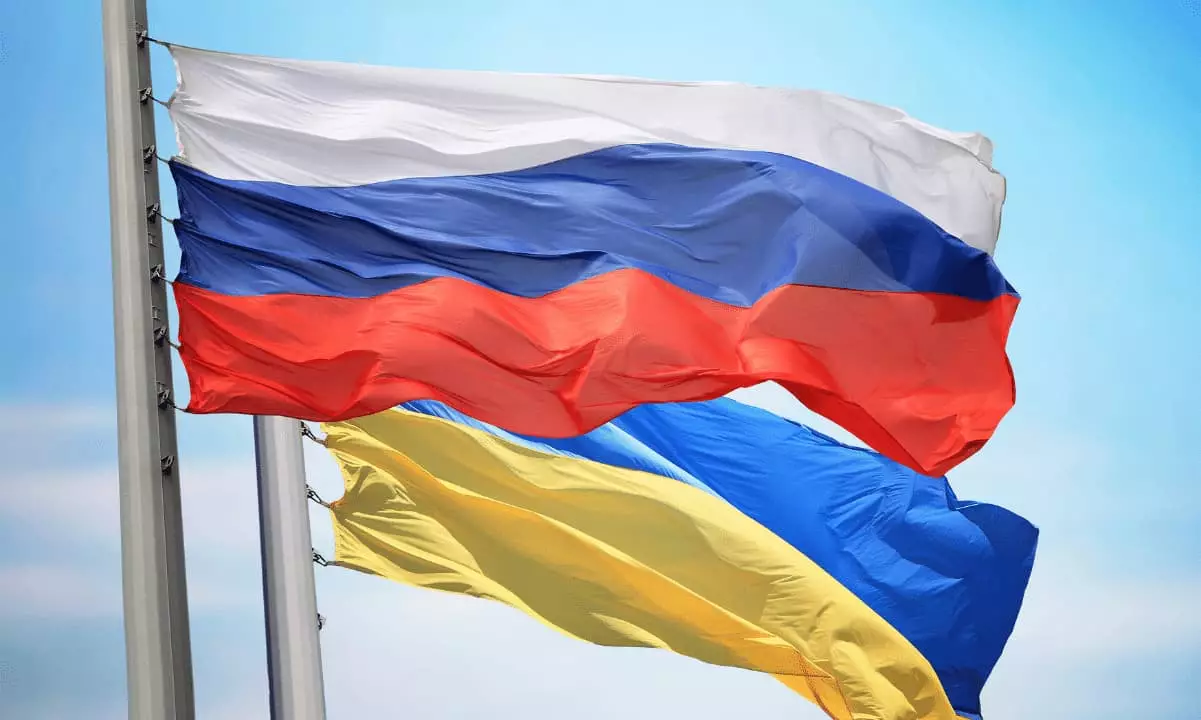In the evolving digital economy, Ukraine and Russia have emerged as pivotal players in the realm of cryptocurrency, ranking sixth and seventh respectively in the most recent Global Crypto Adoption Index. This marks a significant escalation for both nations, especially in the context of ongoing conflicts and stringent sanctions impacting their financial systems. The latest findings from Chainalysis, as reported by CryptoPotato, reveal noteworthy trends that reflect not just survival tactics in a turbulent geopolitical climate, but also an accelerated shift towards decentralized financial systems.
Recent data highlights Eastern Europe as a hotbed of crypto activity, with an astonishing influx of $182.44 billion into Russia alone. In comparison, Ukraine’s inflows reached $106.1 billion. This striking surge is particularly interesting given the ongoing war, which might have catalyzed the necessity for alternative financial systems. Both countries have seen markedly increased usage of decentralized exchanges (DEXes), with inflows from these platforms totaling approximately $149 billion. Ukraine’s DEX inflows spiked more than 160%, while Russia experienced an even more impressive increase of 173%.
The decentralized finance (DeFi) sector has also witnessed a dramatic uptick in activity within these nations. Specifically, large institutional transactions — particularly those exceeding $10 million — have seen a staggering increase in Ukraine, boasting a rise of 361.49%. This trend illustrates a shifting landscape where institutional involvement is becoming increasingly significant, a stark contrast to the prior engagement of retail investors alone. On the other hand, Russia, alongside Belarus, Poland, and Slovakia, demonstrated similar trends in institutional transfers, highlighting a regional pattern in DeFi growth.
While institutional growth is noteworthy, what stands out in the Ukrainian crypto landscape is the burgeoning involvement of retail investors. Transactions of smaller scales saw an impressive increase of 82.29% and 91.99%, respectively, indicating grassroots adoption is actively taking root. This suggests that average citizens are actively turning to cryptocurrency for not only investments but also as a pragmatic solution for daily transactions amidst inflation and economic uncertainty.
The sanctions imposed on Russia have dramatically influenced its crypto environment, leading to an increase in homegrown services. With centralized exchanges seeing stagnant growth, Russian-language no-KYC exchanges have burgeoned, spurred by the necessity to convert fiat currencies into cryptocurrencies. This adaptation illustrates a resilience and ingenuity within the Russian crypto community, as individuals navigate obstacles created by international sanctions.
As Ukraine and Russia continue to navigate their complex geopolitical landscapes, the rise of cryptocurrency presents both challenges and opportunities. The ongoing war and economic sanctions appear to be accelerating the adoption of digital currencies as citizens seek financial autonomy and innovative solutions to age-old banking constraints. Moving forward, these trends in crypto adoption may continue to evolve, reflecting not just regional economic needs, but also a broader global shift towards decentralized finance.

